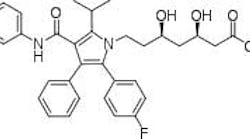Recently, statins have shown pleiotropic effects like antiinflammation and bone stimulation. Pleiotropy occurs when one gene influences multiple phenotypic traits.(5) The aim of a recent study was to investigate the effectiveness of 1.2 % ATV, as an adjunct to scaling and root planing (SRP) in the treatment of intrabony defects.(6) The study involved 60 individuals who were randomized and categorized into two treatment groups: SRP plus 1.2% ATV and SRP plus placebo gel. Clinical parameters were recorded at baseline and at 3, 6 and 9 months. They included: modified sulcus bleeding index (mSBI); probing depth (PD); clinical attachment level (CAL) at baseline, after 6 months and 9 months; and radiologic assessment of intrabony defect (IBD) fill was done using computer-aided software at baseline, 6 and 9 months.
The results showed that mean probing depth reduction and mean clinical attachment level gain was found to greater in ATV group than placebo group, at 3, 6 and 9 months. As well, significantly greater mean percentage of radiographic bone fill was found in the ATV group (35.49±5.50%) compared to placebo group (1.82±1.32%) after 9 months. The authors concluded that ATV can provide a new direction in the management of intrabony defects as an adjunct to SRP.
The use of inexpensive pharmacologic compounds to stimulate the host to produce autogenous bone growth factors such as bone morphogenetic protein (BMP)-2 could be a cost-effective alternative in the management of osseous defects. Topically applied simvastatin (SMV), a cholesterol-lowering drug without graft matrix, has shown to stimulate BMP-2 and bone growth in animal studies.(7) Long term, multicenter randomized, controlled clinical trial will be required to confirm the findings of this study.
An interesting twist is a post-marketing study of periodontal disease among people who take Lipitor. The study was created by eHealthMe based on 164 reports from FDA and user community. On Oct, 10, 2012: 122,253 people reported to have side effects when taking Lipitor. Among them, 171 people (0.14%) have periodontal disease.(8) Did the Lipitor have an effect? While not a randomized controlled clinical trial (RCT), it is interesting to view the results.
*Approximation only. Some reports may have incomplete information.
Sex of people who have Periodontal disease when taking Lipitor*Maria Perno Goldie, RDH, MS
To read previous RDH eVillage FOCUS articles by Maria Perno Goldie, go to articles.












